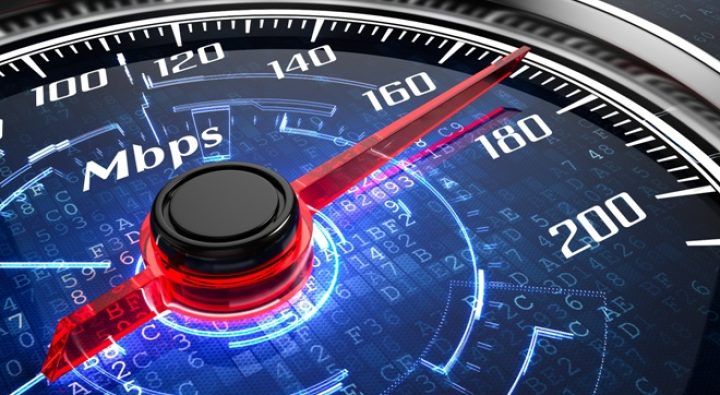Retailers should beef up network bandwidth now to handle customer Wi-Fi, mobile POS systems and coming IoT devices
Retail Transformation
The retail industry is in the midst of an unprecedented transformation. Changes in buyer expectations and behavior, advances in retail technology, and increased competition are propelling the industry forward at an accelerated pace.
Retailers are rapidly adopting technology and adapting operations to offer a more personalized shopping experience. Forward-looking retail owners and executives also work to build more efficient, operational models by capturing more data to inform decisions and automating manual tasks.
The marketing advantages Internet retailers have enjoyed by tracking shoppers’ behaviors online are finding their way into brick and mortar operations. But, the changes are more than just big data and retail analytics.
Technology is also enabling new kinds of interactions between shop floor workers and customers, workers and the back office, and between connected customers, creating a more dynamic shopping experience and work environment.
Retail Technology Benefits
Mobile point of sale systems (mPOS) and customer Wi-Fi are among the most common innovations paying dividends, finding their way into even the smallest retail businesses.
Retailers offer wireless in their stores to increase visitor store browsing time and same store sales from customers seeking Wi-Fi inspiration. mPOS systems are adding efficiency and scalability while enhancing the customer experience and service quality. But there’s much more to gain.
Retailers are using new technologies to:
- Create a more personalized shopping experience and targeted marketing
- Inspire purchases and increase visitor browsing time with free Wi-Fi
- Capture on-the-spot sales and be more helpful with innovative mPOS systems
- Add to purchases by making product information available at the checkout
- Better understand shopping behavior within the store
- Develop more productive and effective store managers
- Increase collaboration with ad hoc video conferences
- Enhance collaboration between sales floor staff and back office merchandisers
- Save on phone service with hosted VOIP
- Optimize store layouts with analytics
Retail Internet of Things
On the forefront of technology are the limitless number and variety of devices categorized as the Internet of Things (IoT). Microsoft estimates IoT devices deployed at 30 billion or more by 2020. That’s four for every person on the planet with much higher concentrations in developed areas.
Retailers expect IoT devices to lower operating costs and improve operational performance in every area. They anticipate huge efficiency gains from actionable real-time information applied to everyday processes.
IoT devices have the potential to create a ‘responsive’ retail environment that informs shoppers re potential purchases to influence their behavior. Customers will benefit from a more personalized, engaging and efficient shopping experience.
Here’s a peek at several of the IoT devices currently in use or soon to appear in retail environments:
IOT Devices: Reason to increase the network bandwidth
- Beacons to track shopper movement and create store heat maps
- Body scanners and magic mirror technology
- Card readers
- Digital signage
- Dressing room sensors
- High megapixel security cameras
- Interactive HD video displays for customers, HR and training
- Intelligent shopping cart displays
- Interactive vending machines
- NFC mobile payment terminals
- RFID tracking tags and sensors for inventory and asset management
- Sensors to read foot traffic for real-time pricing
- Shelf-edge labels to display digital pricing
- Video cameras for face, gender, age and mood detection
- Wireless printers
- Wireless self-price checkers
Increase Network Bandwidth
All of the coming changes and devices will put a huge strain on existing networks. The Internet of Things is bandwidth hungry. The question is, do retailers have what they need to support mPOS, customer Wi-Fi and the coming high-bandwidth IoT devices?
Consider store surveillance and security. The estimates of bandwidth requirements that were used in the previous decade have been blown apart by high-megapixel Internet protocol cameras, video analytics and cloud data storage.
To anticipate and prepare for the new bandwidth-hungry technologies or even to prevent current mPOS systems from locking up, retailers will need to beef up their networks to dramatically increase their bandwidth (data transmission capacity/speed).
Get the Right Internet Service
Getting the right high-speed Internet service is a critical step in preparing the business for emerging technologies. Customer Wi-Fi, mobile POS or kiosk environments, and Internet of Things (IoT) devices and sensors all require Internet.
Moving quickly to take advantage of new opportunities may be dependent on the speed and reliability of a retailer’s Internet connection.
Working with an Internet service provider (ISP) specialist or consultant can help retailers obtain the best Internet service to handle anticipated needs for the best price. Prices and options for Internet service change so quickly that engaging an expert will pay off nicely in savings.
Tighten Security
Each device on the retailer’s network becomes a network access point and potential security breach opportunity. All devices, especially store wireless devices, need to be secured, monitored and managed.
The retailer’s wireless network has to be reinforced to thoroughly safeguard transactions. The risk involved with intelligent IoT solutions has already been demonstrated by the hacking of autos, refrigerators, cameras, printers and medical devices. Every point of entry must be secured.
Cyber-criminals are resourceful. Hackers were able to steal the personal information from 40 million credit cards by gaining access to Target’s network through an HVAC vendor’s application with credentials captured by email malware.
Remote retail network security monitoring for smaller retailers is available at reasonable monthly fees from experienced IT security providers. Investing in a network solution that provides real-time monitoring of the system resources accessed by IoT devices would be beneficial for larger operations.
Get Started
Microsoft advises retailers to get started with emerging retail technology by considering one or two pieces of information that will drive business growth and the IoT devices needed to facilitate measured operational improvement.
Retailers should take corresponding steps to increase network bandwidth and security as they add mPOS, Wi-Fi and IoT solutions. Getting help from experienced retail network and security consultants will maximize growth opportunities while saving time and money and preventing potential business-ending security breaches.








